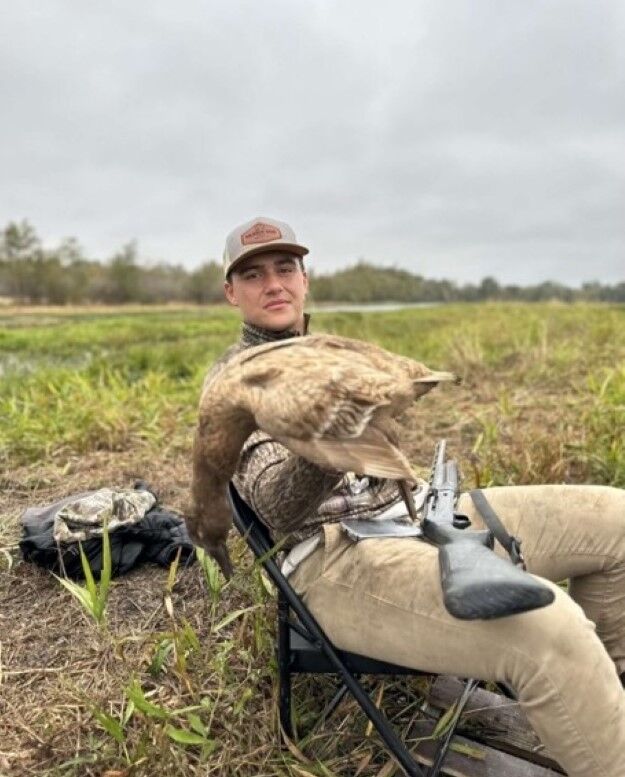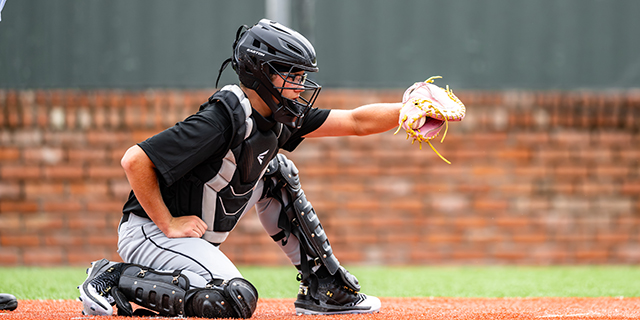Bird of a different feather is one rare duck for Savoy
Published 6:00 am Tuesday, November 21, 2023

- Maddox Savoy of Loreauvllle holds a blonde mallard hen he shot Nov. 11 on the first day of the youth hunt weekend in the East Zone. He downed the rare duck at a crawfish pond near Parks while hunting with his friend, Elliott Landry, also of Loreauvile. The blonde mallard hen flew into gunshot range about 8:15 that morning, according to Savoy.
A 16-year-old Loreauville outdoorsman has enjoyed many youth weekend duck hunts but none equaled Nov. 11.
While duck hunting that morning with a close friend, Elliott Landry, also of Loreauville, Maddox Savoy knocked down a very rare and unique duck prized by waterfowlers, a true trophy.
Savoy and Landry ended the duck hunt and left the crawfish pond near Parks with seven teal, a spoonbill and a mallard hen. It was a successful youth duck hunt one week before the season opened in the East Zone.
“Oh, yeah, we got them,” Savoy said, happily, a few days later.
One of them, however, wasn’t like the others.
The mallard hen looked nothing like typical mallard hens, which normally are mottled brown, with darker brown feathers on their head, plus a violet/blue wing flash (speculum) tipped with black and white bards.
Savoy’s duck had light tan feathers and a flash that was a darker shade of brown outlined by even lighter tan, nearly white, feathers.
Toward the end of the duck hunt, the running back/linebacker who helped the Loreauville Tigers reach the quarterfinals in Non-Select Division III sat on a folding chair and proudly posed with the blonde mallard hen, extending it toward the camera with his right arm. The look on the face of the young hunter, who has harvested beaucoup deer, squirrels and turkey since his father, Lane Savoy, began taking him hunting as boy, says it all.
It was a trip he’ll forever remember.
“Yeah, man, we got out there pretty early in the morning, about 3 o’clock. We didn’t have a blind or anything. We just brushed us up a blind,” Savoy said, noting they cut down a few small willow trees in the predawn darkness.
Then they tossed out six or seven decoys, made sure their makeshift duck blind “looked good,” and waited for daylight.
“There were a couple birds flying around. They had a couple spoonbills come in and we shot one of them,” he said.
The Loreauville High School juniors who have hunted together the past three years waited patiently and were rewarded soon after.
“A nice flight of teal passed. We made a good rap on them,” Savoy said.
It didn’t take long for their adrenalin to spike again.
“A little later in the hunt, the overcast started clearing up. Around 8:15 a duck passes that sounded just like a mallard. We called it back. It circled around one or two times and came into the decoys. When it came in me and my buddy shot at it,” he said.
Savoy’s 12-gauge Benelli brought it down, he said. Landry left the duck blind to get the duck.
“He said, ‘Maddox, it don’t look like a hen mallard. It looks like a mixed breed.’ He brought it to me. We didn’t really know what to think of it,” he said, noting he took a photo with his cell phone and texted it to his older brother, Gavin Savoy.
“I called my brother. He said, ‘Dude, that’s a very rare bird you shot right there. That’s a trophy right there … a blonde mallard hen.’
“Man, whenever I heard that, that made our hunt right there. We were excited and walking all around the blind. We were freaking out.”
Savoy said he and his dad still are trying to decide on a taxidermist for the trophy mount.
Some people have said blonde mallard hens are the result of domestic integration while others have said it’s a natural mutation. More lean to the latter belief.
Several Internet sites quoted the rarity as 1 in 165,000. Another cited 1 in 45,000.
According to a story posted on focusingonwildlife.com, leucism is responsible for the unique color in a blonde mallard hen, an inherited characteristic where lack of pigment causes wildlife to appear lighter than typical in color or have white patches.
The British Trust for Ornithology agrees, noting “leucistic” birds’ plumage lacks melanin pigment due to cells responsible for melanin production being absent. Oddly enough, those blonde mallard hens still have dark eyes and normal vision.
“It’s once-in-a-lifetime. I can’t thank God enough for that. Crazy. Crazy,” Savoy said.
He was anxious for the East Zone opener on Nov. 18.
“Oh, yeah, I’m going to hunt this weekend, probably in the Basin (Atchafalaya Basin) around Bayou Benoit … find some holes with water,” he said.
Chances are astronomical he won’t bring down another anomaly like he did the weekend before.
Or are they?





